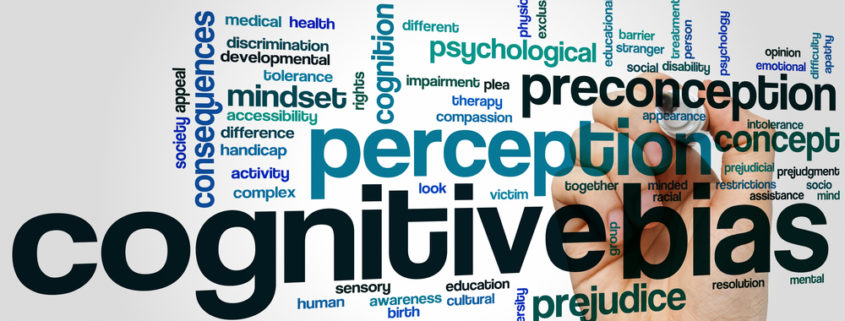
Reducing Unconscious Bias In Recruitment
Reducing Unconscious Bias In Recruitment
Research by the Australian National University shows people from culturally diverse backgrounds with equivalent qualifications and experience often have to submit many more job applications before they are offered an interview.
In an effort to counter this unconscious bias in recruitment practices the Victorian Government announced in May it would run a pilot program aimed at levelling the playing field for job seekers.
The 18-month pilot will assess which personal details, including name, gender, age and location, should be de-identified during the application process. This pilot is an Australian first and the Victorian Minister for Multicultural Affairs Robin Scott said it would give all job applicants a ‘fair go’ regardless of their age, background, gender or postcode.
“This initiative is the first of its kind in Australia and an important step towards equality of opportunity in our workforce,” said Ms Scott.
This proactive initiative of the Victorian Government is an attempt to ensure the best person for the job is offered the position and to build a more diverse workforce as a result.
Diversity in the workplace is a worthy goal and leads to:
- Improved ability to meet customer needs: People from diverse backgrounds bring a great range of skills, abilities and experiences and may have an enhanced understanding and empathy towards a wider range of community groups than an organisation could otherwise reach.
- Better problem solving and innovation: teams comprised of people from different backgrounds, socio economic groups, ages and abilities can offer new perspectives and solutions to organisational challenges and problems. Working collaboratively can afford everyone greater insight and new ways of approaching a task. Exposing people to a new worldview can also drive internal innovation and productivity gains.
- Better staff recruitment and retention: interviewing and recruiting candidates from a broad range of backgrounds and experiences, means an organisation is more likely to end up with the best person for the job. Embracing, nurturing and developing diversity in the workforce can also improve staff engagement and retention rates and will make it easier for an organisation to attract the best candidates moving forward.
The challenge is overcoming unconscious bias among employing staff members to enable diversity to flourish. It’s important to note that unconscious bias is inevitable but not always negative. Unconscious bias is the brain’s way of helping us process and evaluate the overwhelming volume of information we face on a daily basis and enables us to make informed decisions based on past experience.
Research suggests that humans instinctively and automatically sort and categorise people based on visible attributes such as gender, age, skin colour, height and weight. Characteristics such as accents, disability, appearance, job title and social status also come into play. No matter how neutral people think they are towards other groups, unconscious negative opinions about people can still manifest.
In workplace recruitment practices this may mean a female candidate, or an applicant with an ethnic name or of a certain age may not be offered an interview, even if their skills and experience are on par with the resume of another candidate.
Acknowledgement
The logical first step towards minimising the effects of unconscious bias in recruitment practices is therefore to acknowledge it happens and to consider the range of prejudices or stereotypes that may affect the recruiters in an organisation.
This may mean conducting an audit of your jobs ads to determine whether or not they include language which is more appealing to one group over another or neurological testing to help recruiters identify their own unconscious biases. One such test is the Harvard University Implicit Association Test which measures the strength of links people make between concepts, for example, ethnicity or sexuality and evaluation of the stereotypes to determine whether those concepts are negative or positive.
There are a range of agencies and services available to help organisations identify and address the unconscious bias affecting their recruitment practices and employing an external agency means the review process is likely to be affected by an organisational bias.
Identifying and acknowledging unconscious bias is the easy first step, understanding that you can’t ‘fix’ a person’s bias is the second very tricky step, which is potentially the reason why technology based solutions and blind resumes, which have all the identifiers stripped out such as the system being trialed by the Victorian Government, are rapidly growing in popularity as effective tools for levelling the playing field.
Educate and inform
In Australia it’s illegal to discriminate against people based on their sexuality, gender, ethnicity, ability, religion or age. Many managers assume that workplace policies which uphold this legislation are enough to prevent bias in recruitment, but they are not.
It’s important to run ongoing information and training campaigns to define and assert the organisation’s position on the value of diversity. Line managers should be encouraged and incentivised to prioritise the recruitment of diverse team members and regular reporting can help track organisational progress.
Regular reiteration of diversity success stories and examples of how inclusive hiring and workplace practices positively benefit everyone can also have a powerful impact on people’s inbuilt prejudices.
With more organisations taking an active role in identifying and addressing unconscious bias and the increasing availability of technology based solutions designed to take human fallibility out of the recruitment process, hopefully recruitment practices moving forward will meet the right person is offered the job more regularly.





